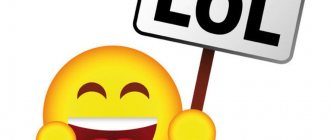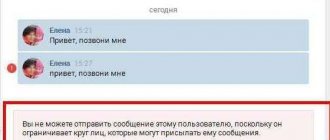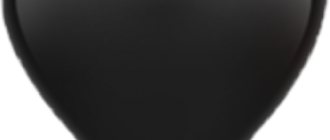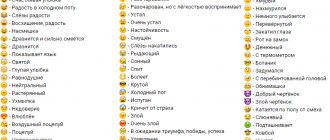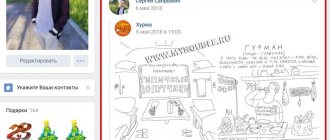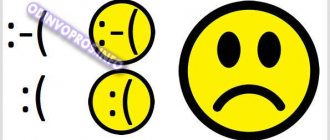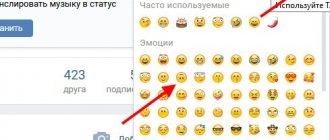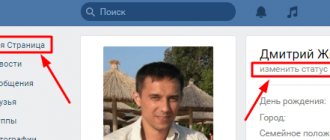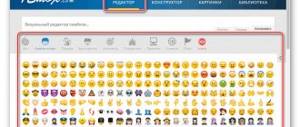On the Internet you can be whoever you want, whenever you want. You can like cats (or even be them), listen to birds singing, or look for who is wrong. But no matter what you do and no matter who you want to appear to be, your communication style will definitely give you away. Nowadays people are judged by their Internet handwriting no less than by their clothes or car. Some little things, like a flashing neon sign, indicate to your interlocutor whether you speak the same language, whether you are your own or someone else’s, whether your values coincide and whether you have the same concept of adequacy.
Of course, when communicating with friends, you can still use “Albanian” (if you have enough time and patience), distort phrases, draw swear words out of flowers, or simply communicate with GIFs. But if you want to be taken seriously in correspondence with strangers, bosses or colleagues, you should refrain from certain things. In this case, we will not talk about the content, but rather about the form of the text.
What is a smiley?
Let's start with the definition itself. From English smiley is translated as “smiling”. Thus, emoticons are stylized, schematic images. They are especially popular in online correspondence and SMS messages.
Traditionally, the smiley looks like a yellow circle, inside of which there are dotted eyes and a black arc indicating the mouth. The computer version looks almost the same. The only difference is the presence of a hyphen, which is located between the eyes and mouth and indicates the nose. True, recently the abbreviated form, without a line in the middle, has been used quite often. Today, the meaning of emoticons depends on the location of the arc and many other nuances.
The future of the smiley
Every year, the spread of emoticons around the world and the frequency of their use to express feelings is only increasing. Originating from a few simple characters such as the colon, dash and parenthesis, they have become an amazing tool for conveying emotions and now their number is simply amazing. There are huge tables for deciphering the meanings of emoticons. Recently, “smiley culture” has been seriously discussed and scientists are working on studying how people express their emotions using emoticons, and based on this they are trying to identify the person, as well as detect mental problems, if any. It is even proposed to create a new discipline - “cyberpsychology”. So it seems that we are at the beginning of the formation of a new cyberculture of emotions and do not even realize the full scale of what is happening.
Well, a little video:
When did emoticons appear?
Most sources claim that the smile was first drawn by Harvey Bell at the request of one of the insurance companies. The company wanted their logo to be not only memorable, but also to inspire confidence in those who wish to use the company's services. The artist received a fee of $50 for this logo. Then many clients wondered: what do the emoticons on the badges of the company’s employees mean?
But the real birthday of this funny sign is September 19, 1982. It was then that Scott Fahlman proposed introducing a new symbol into the computer lexicon. The professor suggested denoting a smile using a colon, a hyphen and a closing parenthesis. Such a designation, according to scientists, was supposed to show that the message is humorous in nature and should not be taken seriously. This is how its computer version appeared.
Examples of the meaning of emoticons Emoji
Many users mistake this picture for a crying face. In fact, the drop is not a tear, but sweat, meaning relief after the excitement experienced.
Don't be fooled, this is not a nut at all, but a roasted sweet potato.
What appears at first glance to be a pyramid of ping pong balls is actually a "harvest festival card" symbolizing a Japanese traditional ceremony that occurs during the Tsukimi festival.
If you think it's an acorn, you're wrong. It's actually a chestnut.
This picture should not be used as a greeting card as it is nothing more than a bookmark.
This gesture means “OK” and indicates that everything is fine with you.
Raised palms do not mean an appeal to higher powers, but symbolize joy.
This “smiley” means severe irritation and a nervous state. Many users mistakenly use it to express contempt.
What looks like a black cube actually symbolizes the Muslim shrine of the Kaaba located in Mecca.
No, this girl does not have deer antlers growing on her head. They just give her a facial massage.
Often users resort to this picture when they want to express denial of something, but in fact it symbolizes the person at the information board.
This is not a dance move at all, as it may seem, but open arms.
This boy didn't hide or think. Believe it or not, he bows.
A smiley face without a mouth symbolizes silence. However, it is often used to express confusion, even fear, and is sometimes used as a "Kolobok" character.
You might think it's fire, but it's actually a name badge.
This sign is not a fancy image of a house at all, but a symbol of anger.
The picture below appeared with the release of iOS 10.2. Some people might see a glass of whiskey here, but in reality it's just a glass.
This symbol does not mean ordinary laughter, but hysterical laughter, when the laugher literally rolls on the floor.
This image can be interpreted as both a jellyfish and an umbrella, but Apple believes that this is what the oriental furin bell looks like, ringing in the wind.
Do not confuse this symbol with the panic button. It's actually a trackball.
You shouldn’t look for hidden meaning in this sign, because it’s just a hole.
It may seem that this guy is none other than the legendary Ziggy Stardust performed by British artist David Bowie. Despite the similar makeup, this is just a symbol of any singer.
Why are emoticons needed?
Having learned how emoticons appeared, you probably wondered why they are needed? Have you ever asked yourself what a normal conversation consists of? Is it only from words? Of course not. In communication, we take into account not only words, but also intonation, gestures, and especially the facial expressions of the speaker.
But how can you convey all this in correspondence and make it not so dry? Show another person that you are sad or laughing, crying or joking? In fact, no way. Unless using emoticons.
We need these funny signs precisely in order to convey our feelings and sensations when the interlocutors do not see each other. Using them, you don’t need to write long explanations; just write or draw a smiley face, and everything becomes clear. They replace our intonation and facial expressions, and it has become simply necessary to use them when communicating on the Internet. If you and your interlocutor know what emoticons mean, then the conversation becomes much brighter and more interesting.
Parentheses instead of emoticons
Everything can be taken seriously. So serious that you don’t even know about the purpose of the brackets, but this is:
- An easy way to write an emoticon;
- Option for expressing positive and negative emotions;
- The only opportunity for owners of old mobile phones;
- A symbol understandable to most;
- The “eyeless” symbol is strange for foreigners.
Some conversations simply need to be diluted with smiles so that everything is not so sad or uninteresting. For other dialogues it is better to reserve a business style, without slipping into familiarity. Distinguishing between such conversations and correctly using the entire arsenal of the keyboard is a useful skill for those who communicate a lot online.
Parentheses, as an expression of emotions, can be found:
- In its own dialog window;
- On the personal blog service;
- In messages on the forum;
- In the city chat window;
- In VhatsApp or Viber correspondence.
You can encounter this anywhere, and not understanding the situation will only complicate life. If 10-15 years ago these same brackets and emoticons could be called something new and incomprehensible, today they have already become so integrated into everyday life that it is difficult to imagine communicating with some people without them.
There is nothing strange in not knowing about the function of parentheses in messages. Everyone “spins” in their own environment, with their own rules and regulations. There is nothing surprising in not understanding or not knowing the framework of another community.
Rules for using emoticons
It would seem that the use of emoticons does not require the author to know any rules. But is it? Let's look at some tips from Internet regulars.
- First of all, they note that you cannot use emoticons without “eyes.” That is, you should write: :), and not just).
- Secondly, you should not use multiple parentheses. This may indicate that a person has multiple chins.
- Thirdly, it is noted that the “nose” part, that is, the dash, can always be skipped.
- Fourthly, the emoticons themselves cannot be sculpted close to the text. There should be a space between the last word and the “smile”.
- In addition, it replaces a period, so you don’t have to think about whether to put a punctuation mark after or before the smiley.
- Also, many advise refraining from using rare and obscure emoticons. Not everyone can understand their meaning.
- You should also not use a lot of monotonous “smiles” at the end of a sentence or message. One or two will be enough. You should know when to stop even when expressing emotions.
Mac emoji
Some users mistake the droplet for a tear. We advise you to take a closer look. It is located not directly under the eye, but on the temple! This means that the person was very excited about something, but now everything is fine.
With this emoticon, everything is also ambiguous. Why didn’t they accept him! Someone sees a raw eggplant, someone imagines a cut nut. No, these are jacket potatoes, only half of the whole vegetable. The most attentive person will be able to see the tubers on the skin.
This picture also gave rise to various theories. Tennis or golf balls? Lizard eggs that were laid on a hive? No, the author was trying to depict special traditional rice cakes that are usually eaten in Japan on holidays. And the plant next to it is not just for the beauty and completeness of the landscape. This is rice, because they celebrate the harvest festival.
Smileys and their decoding
Probably each of us is interested in the meaning of symbols to indicate feelings. After all, knowing what emoticons mean, we can use them correctly. Here are some examples:

 — these two emoticons mean a smile;
— these two emoticons mean a smile;- :(:-(- are used to indicate sadness;
- =) =-) - these combinations express joy;
- :> :-> - this is how they smile or giggle on the Internet;
- :} :-} - and this is how sarcasm is expressed;

 — if you want to wink at your interlocutor, select one of these options;
— if you want to wink at your interlocutor, select one of these options;- :-F - with this emoticon you can kiss your interlocutor;
- :S:- S - expresses embarrassment;
- >:(- these combinations express anger;
- ~:0 - these emoticons express horror;
- @—>— is a rose that you can give to your interlocutor.
Of course, this is not a complete list of emoticons used. There are quite a lot of them, some of them are quite difficult to understand without knowing their decoding. But in this article we have presented the most common ones.
Well, now you know what emoticons mean and how to use them correctly. You also know the history of their origin, although it should be noted that almost every second American credits himself with the idea of creating emoticons. But we have given the most reliable and well-known versions. You also learned how common emoticons are deciphered. We hope you found this article helpful.
What does this or that Emoji mean? Many people ask this question because it is not always clear what a smile means. Emoji with two hands together, for example. What does this emoticon mean? Is it two people giving each other a high five? Or is it someone praying? If you sometimes doubt what an Emoji means, then we have prepared some tips that will help you answer this question.
What does the color of the hearts mean?
The coloring of hearts when communicating on social networks is of great importance, since without much explanation it symbolizes certain intentions and relationships between people.
The emoji include the symbols “broken heart” and “heart pierced by an arrow.” These emoticons are clear without words. But why are hearts painted in different colors needed, and what can they mean? You especially want to understand the meaning of such emoticons when they are sent by a person you care about and really like.
How to Find Out What an Emoji Means on Your Mac
There are several ways to find out the meaning of an emoji smiley on your Mac.
The first method is quite simple:
Step 1:
In the Messages app on your Mac, tap an emoji to open the Emoji keyboard.
Step 2:
Find the emoji whose meaning you want to know.
Step 3:
Hover your cursor over an Emoji and after a couple of seconds, you will see a tooltip with a description of this smiley.
Second way:
Step 1:
In any application, go to Menu Bar > Edit > Emoji Icons and Symbols (or Special Characters in some versions of OS X). This will bring up a window with all the symbols present on your computer.
Step 2:
Select Emoji in the left sidebar.
Step 3:
Select the Emoji whose meaning you want to know and click on it.
Step 4:
On the right side, you will be presented with the meaning of this Emoji.
Find out what Emoji means using iPhone
If on a Mac you can easily find out what a smiley emoji means, then on an iPhone, iPad or iPod Touch it is more difficult. We're going to use the feature to say the name of the emoji out loud.
Note that for some reason, this feature is not available on iOS 9, but it still works on older versions of iOS. It is not known why Apple removed this feature, it may have been a mistake and they will be bringing it back in the future.
Step 1:
On your iPhone, iPad, or iPod Touch, go to
Settings > General > Accessibility > Speech
and turn on
Speak
.
Step 2:
Create a new email or note and insert the Emoji whose meaning you want to know.
Step 3:
Select an emoticon and select “Say” in the menu. Siri will say the name and symbol of the emoji.
Use the Emoji Dictionary app
When talking to a person in person, you can easily express your emotions on your face and the interlocutor will immediately understand what you feel or want to say. However, nowadays communication through various social networks is becoming increasingly popular. And in order to make communication as convenient and colorful as possible, emoticons
.
They are stylized graphic images
, namely, a cartoon face expressing various emotions, such as joy, anger, anger, admiration and others.
Thanks to this, you can very easily understand a person’s mood and shorten your message significantly, which makes communication more exciting. Also, if you happen to somehow contact a foreigner, but you don’t know the language he speaks, then emoticons will be of great help, since they are an international means of communication
.
The history of emoticons
It is difficult to name the exact date of the appearance of such a tradition, but it is generally accepted that the idea to use classical combinations :-) was invented by the famous computer scientist Scott Elliott Fahlman.
Take a closer look, if you turn your head to the side, you can really see a smiling face, while in the second combination it’s sad. Today, if we enter such combinations of characters on any platform that support graphic emoticons, then our characters will turn into them automatically. This tradition has taken root among active users of the first online means of communication. They could use a large number of such combinations of punctuation marks and letters, meaning different situations and emotions like:
- :-D, - a wide smile or uncontrollable laughter;
- :'-), :'-D - laughter to tears;
- XD, xD – sarcastic grin;
- :-* – despondency, embitterment;
- *** – kiss.
And a bunch of other combinations, the active use of which depended only on the depth of knowledge of online slang among the participants in the conversation and they could mean anything.
Progress does not stand still and gradually in messengers on websites and forums, encoding began to turn these characters into graphic images. Usually small, black and white koloboks and other funny pictures that reflect your emotions.
A little history
In the 17th century in Slovakia, emoticons were used to convey positive emotions
. Ex, written by Erwin Schulhof in 1919, contains 4 emoticons that convey different emotions. The film “Port City” also stood out with an emoticon, only it expressed painful despair.
The stylized image was used in the films Lili (1953) and Gigi (1958). It was no longer an expression of sorrow, but an expression of happiness. The image of emoticons continues to be popularized and various well-known companies and brands do not hesitate to use them in their everyday life. They are used in many films and TV series, including Forrest Gump. Also, from 2005 to 2013, the smile became the emblem of the All-Russian youth forum Seliger.
Emoticons that have changed their meaning
Sometimes the intent of an emoticon does not match its role in chats. Smileys change their meaning, moving from country to country, from culture to culture. Sometimes the original and usual meanings are so different that they cause laughter.
Table 5. The most popular emoticons that everyone always uses “wrongly”
| Smiley with arms outstretched, palms facing the reader | In Russian chats he expresses a prayer that everything goes well, or delight in good luck and success. Sometimes it means "please". In the native American sign system it means an open book. |
| Smiling face with tongue on the side | Most use it as a friendly, welcoming tease or to convey a playful, cheerful mood. |


